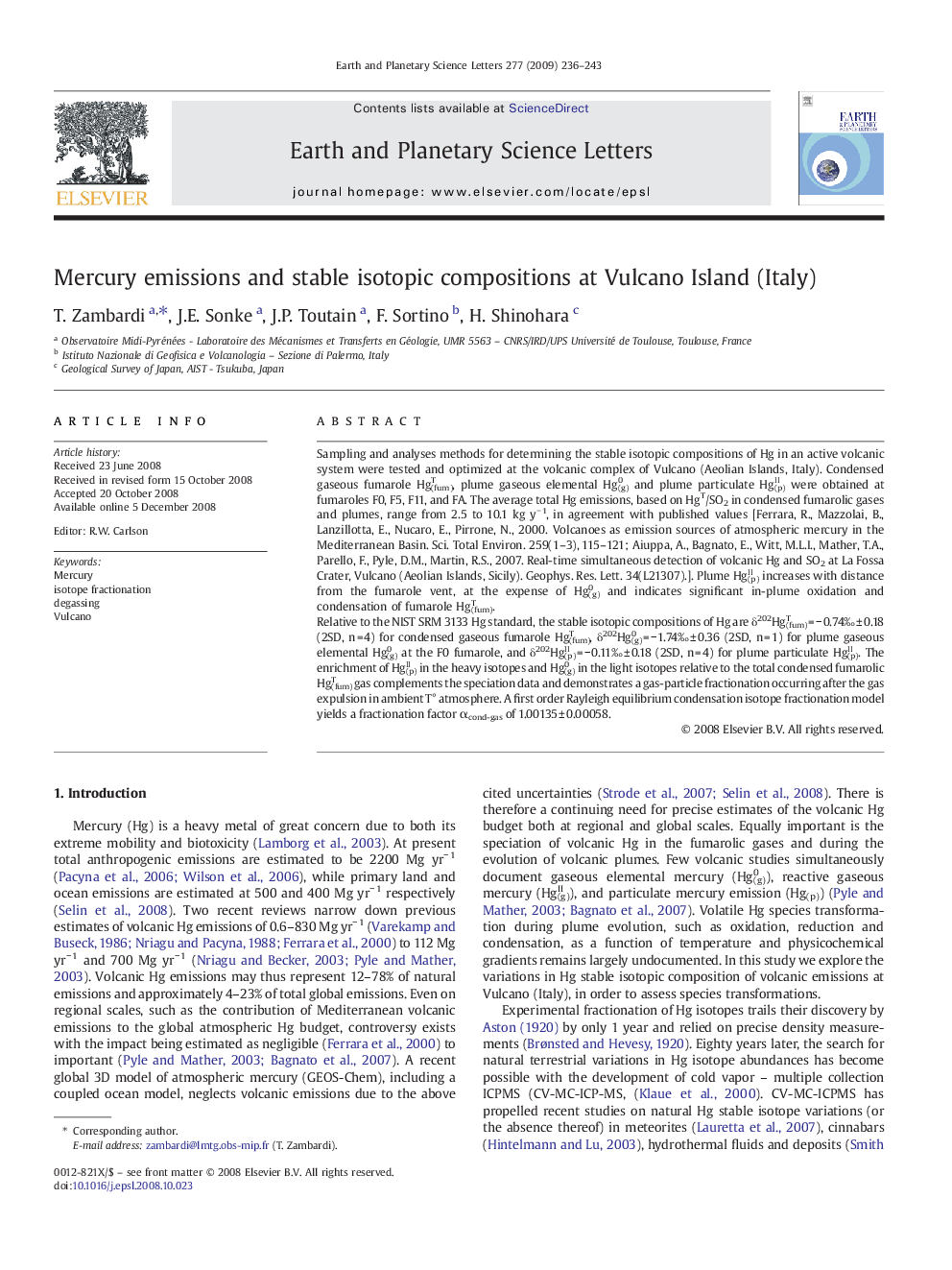| کد مقاله | کد نشریه | سال انتشار | مقاله انگلیسی | نسخه تمام متن |
|---|---|---|---|---|
| 4679542 | 1634882 | 2009 | 8 صفحه PDF | دانلود رایگان |

Sampling and analyses methods for determining the stable isotopic compositions of Hg in an active volcanic system were tested and optimized at the volcanic complex of Vulcano (Aeolian Islands, Italy). Condensed gaseous fumarole Hg(fum)T, plume gaseous elemental Hg(g)0 and plume particulate Hg(p)II were obtained at fumaroles F0, F5, F11, and FA. The average total Hg emissions, based on HgT/SO2 in condensed fumarolic gases and plumes, range from 2.5 to 10.1 kg y− 1, in agreement with published values [Ferrara, R., Mazzolai, B., Lanzillotta, E., Nucaro, E., Pirrone, N., 2000. Volcanoes as emission sources of atmospheric mercury in the Mediterranean Basin. Sci. Total Environ. 259(1–3), 115–121; Aiuppa, A., Bagnato, E., Witt, M.L.I., Mather, T.A., Parello, F., Pyle, D.M., Martin, R.S., 2007. Real-time simultaneous detection of volcanic Hg and SO2 at La Fossa Crater, Vulcano (Aeolian Islands, Sicily). Geophys. Res. Lett. 34(L21307).]. Plume Hg(p)II increases with distance from the fumarole vent, at the expense of Hg(g)0 and indicates significant in-plume oxidation and condensation of fumarole Hg(fum)T.Relative to the NIST SRM 3133 Hg standard, the stable isotopic compositions of Hg are δ202Hg(fum)T = − 0.74‰ ± 0.18 (2SD, n = 4) for condensed gaseous fumarole Hg(fum)T, δ202Hg(g)0 = − 1.74‰ ± 0.36 (2SD, n = 1) for plume gaseous elemental Hg(g)0 at the F0 fumarole, and δ202Hg(p)II = − 0.11‰ ± 0.18 (2SD, n = 4) for plume particulate Hg(p)II. The enrichment of Hg(p)II in the heavy isotopes and Hg(g)0 in the light isotopes relative to the total condensed fumarolic Hg(fum)T gas complements the speciation data and demonstrates a gas-particle fractionation occurring after the gas expulsion in ambient T° atmosphere. A first order Rayleigh equilibrium condensation isotope fractionation model yields a fractionation factor αcond-gas of 1.00135 ± 0.00058.
Journal: Earth and Planetary Science Letters - Volume 277, Issues 1–2, 15 January 2009, Pages 236–243